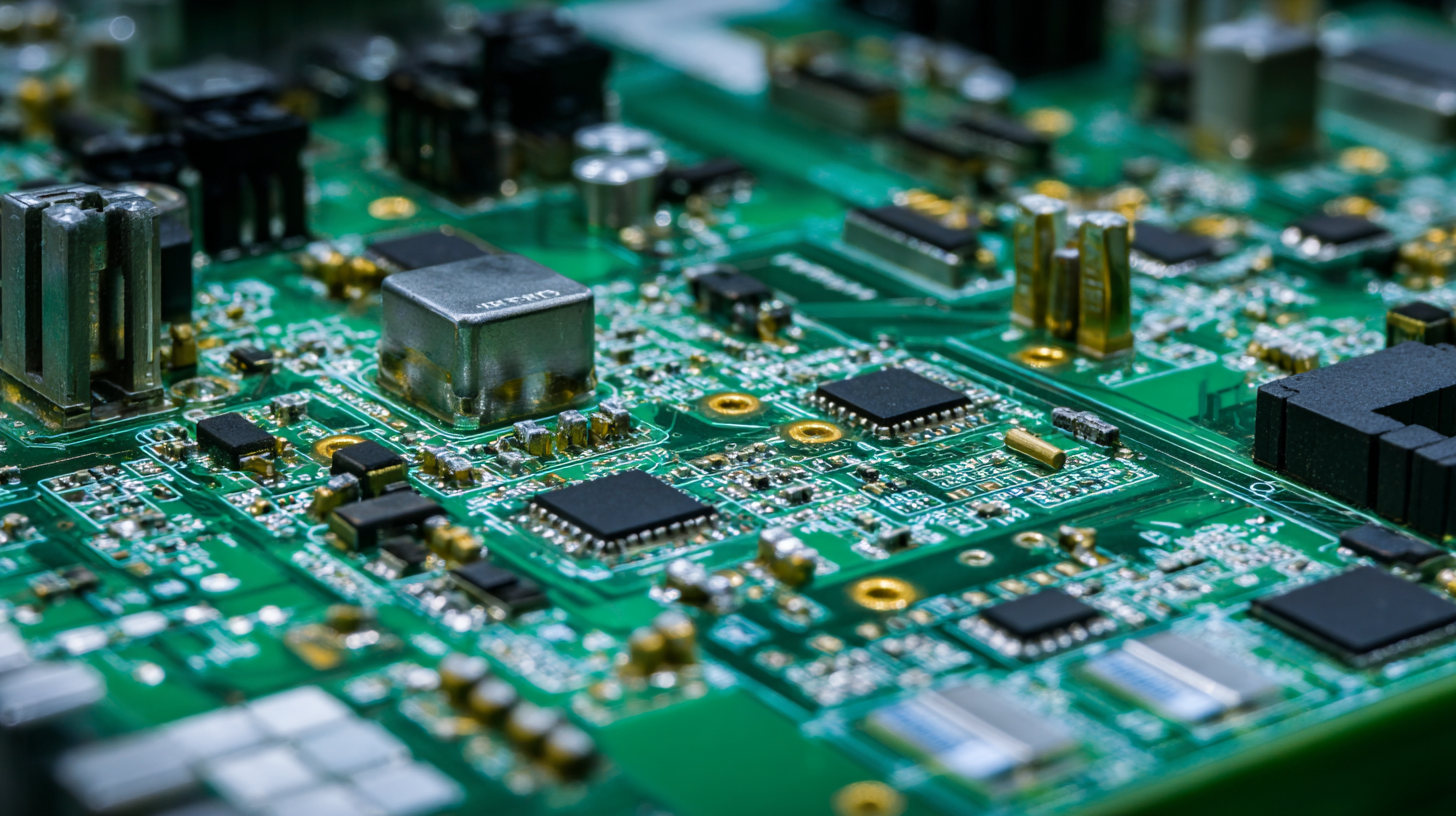WORLD electronics offers a complete line of electronic circuit board manufacturing and assembly services, as well as advanced manufacturing services. Our commitment to quality and service is second to no supplier.
Learn MoreOur team of engineers assists you in the development of new designs to optimize quality manufacturability (DFM) and testability, resulting in cost minimization and reduced product development time.
Learn MoreOur flexible manufacturing floor layout and highly trained staff allow for Quick Set-up and Tear Down of small volume prototype runs. This combination grants our customers the benefit of turning new designs quickly and accurately.
Learn MoreWORLD electronics is dedicated to quality. This quality is what underpins our commitment to thorough testing. Our engineers can develop a set of tests that ensure reliability and high performance in all products.
Learn MoreSupply chain management has crossed over from being a narrow management function to being a key operational function.
Learn MoreIn today's technologically driven world, the demand for high-quality electronics boards is soaring, underpinned by a market projected to reach $1 trillion by 2025, according to market research by Statista. As industries increasingly rely on reliable and efficient electronic components, selecting the right manufacturer has become crucial for achieving superior product performance. A recent report by IPC (Association Connecting Electronics Industries) highlights that nearly 80% of electronics failures can be traced back to manufacturing defects, underscoring the significance of stringent quality standards in the production process. Therefore, understanding how to choose a reputable manufacturer is essential for businesses aiming to thrive in this competitive landscape. This blog will provide insights into the key factors to consider when selecting a high-quality manufacturer to ensure that the electronics boards meet the highest standards of reliability and performance.

In the rapidly evolving field of electronics manufacturing, adhering to quality standards is paramount. Recent initiatives highlight the commitment to enhancing quality assurance processes, such as new validation kits that provide end-to-end chip quality assurance for next-generation IC designs. This not only promotes product reliability but also aligns with national strategies aimed at boosting industrial performance. For instance, the "Made in China 2025" initiative emphasizes innovation-driven high-quality development, creating a framework that encourages manufacturers to prioritize quality at every stage of production.
To maintain quality in electronics manufacturing, businesses should leverage advanced verification systems and adhere to industry-standard certifications. Research indicates that companies implementing rigorous quality standards experience up to 30% reduction in defects and significantly improve customer satisfaction.
**Tips:**
1. Invest in cutting-edge validation tools to ensure comprehensive quality checks throughout the manufacturing process.
2. Regularly train staff on the importance of quality standards to cultivate a culture of excellence within your organization.
3. Stay informed about international certification requirements, like those from BIS in India, to facilitate smooth market entry and compliance with global standards.
The manufacturing of electronics boards is a complex process that demands adherence to high-quality standards. Key processes such as PCB fabrication, assembly, and testing significantly influence the overall product quality. According to a report by IPC, 70% of electronic failures stem from design or manufacturing issues, emphasizing the need for rigorous quality control measures throughout the production cycle.

When it comes to electronics manufacturing, the quality of the facilities plays a pivotal role in ensuring superior standards for products. China is renowned for its robust manufacturing ecosystem, boasting a wide array of state-of-the-art facilities that specialize in producing high-quality electronics boards. These facilities are not just equipped with advanced technology but also adhere to international quality standards, which highlights their commitment to excellence. Evaluating these top manufacturing facilities in China reveals a landscape driven by innovation, precision, and an unwavering focus on quality control.
One of the standout features of China’s leading electronics manufacturing plants is their rigorous testing protocols. Many of these facilities implement comprehensive inspection systems at each stage of production, from initial components to final assembly. This dedication to quality assurance not only minimizes defects but also enhances the reliability of the final product. Furthermore, the skilled workforce in these plants plays an essential role in maintaining high standards, leveraging expertise in both traditional manufacturing processes and modern automated solutions. For companies looking to partner with manufacturers, understanding these attributes is crucial in ensuring they align with their own quality expectations and business objectives.
In today’s competitive electronics market, maintaining consistent quality in production is paramount. Industry reports indicate that over 70% of manufacturers highlight quality control as the primary factor influencing customer satisfaction. Implementing best practices in manufacturing standards is essential for electronics boards, which serve as the backbone of modern technology. Notably, adopting rigorous testing protocols during the production phase can mitigate defects and enhance reliability. According to a study by the IPC (Association Connecting Electronics Industries), companies that implemented standardization in their processes observed a 30% reduction in product failure rates.
Additionally, investing in advanced automation and quality management systems can further bolster production consistency. The Purchasing Managers' Index (PMI) reported that manufacturers utilizing automated inspection technologies achieved a 25% increase in operational efficiency. By systematically integrating quality assurance checkpoints throughout the production line, manufacturers can swiftly identify and rectify issues before they escalate, ensuring that each electronics board meets the highest standards. These measures not only improve product quality but also foster trust and loyalty among consumers, ultimately driving sales and market share in this ever-evolving industry.
This chart illustrates the defect rates in electronic board manufacturing across different production standards. It highlights the importance of adhering to rigorous quality practices.
 As the electronics manufacturing sector evolves, maintaining high quality standards becomes increasingly essential. Future trends in electronics manufacturing quality assurance will focus heavily on automation and advanced technologies. With the adoption of AI and machine learning, manufacturers can predict potential defects and implement corrective measures before products reach the market. This proactive approach not only improves product reliability but also enhances overall operational efficiency.
As the electronics manufacturing sector evolves, maintaining high quality standards becomes increasingly essential. Future trends in electronics manufacturing quality assurance will focus heavily on automation and advanced technologies. With the adoption of AI and machine learning, manufacturers can predict potential defects and implement corrective measures before products reach the market. This proactive approach not only improves product reliability but also enhances overall operational efficiency.
Tip: Integrate predictive analytics into your quality assurance processes to identify trends and anomalies in production data. This will help in making informed decisions and minimizing defects early in the manufacturing process.
Moreover, embracing Industry 4.0 principles will transform quality assurance practices. Smart factories equipped with IoT technologies will enable real-time monitoring of production lines. This connectivity allows for instantaneous feedback loops, ensuring that any deviations from quality standards are addressed immediately.
Tip: Implement IoT sensors to track production metrics in real-time, providing valuable insights into the manufacturing process and enhancing your ability to react swiftly to quality issues.
Keeping pace with these trends is crucial for businesses aiming to produce top-notch electronics boards that not only meet but exceed quality expectations.